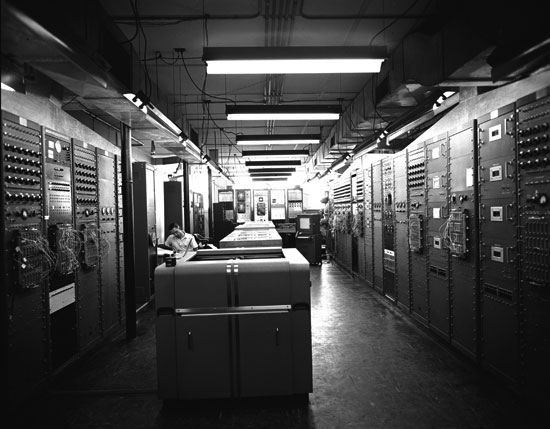Resurrecting the MIDAC: Our Ideas
The design of an application which simulates pieces of the MIDAC in the CAVE will require the active participation of one or more faculty engineers or computer history experts who can help to determine the most appropriate functions to model. This manual can, however, give a sense of the CAVE as an exhibit space, what will be required to mount an exhibit there, some preliminary suggestions for topic focus, as well as considerations for staffing the design process. The CAVE is located in the Duderstadt Center and is under the supervision of the UM 3D Lab, a subunit of the Digital Media Commons. It is a 10x10x10 foot square room which features projections on three walls and the floor. The illusion of 3-D immersion comes from LCD shutter glasses, which contain sensors, allowing the computer to track the movements of a visitor and move through the projected environment accordingly. Because the CAVE is only equipped to respond to one set of sensors, there may only be one lead visitor at a time-- the one the computer responds to-- but other visitors may cluster around the lead and achieve a similar if slightly skewed effect. The maximum number of viewers at a time is five, though 3D lab staff recommend even fewer depending on the volume of people and the level of interactivity of the virtual simulation.

The CAVE is not available to visitors on a drop-in basis. Viewing times must be pre-arranged due to staffing requirements, as well as the fragility of the space and the significant expense of operating it. A primary concern is bulb-life. The bulbs which power the projection of the simulations have a limited life-span, and once one bulb fails, all bulbs must be replaced at the same time. This places some constraints on the extent to which the MIDAC installation can be conceived of as a traditional museum exhibit. Visitors will mostly likely experience it as a planned event with restricted time frames for actually viewing the MIDAC. Consideration should be given to planning an activity to go along with the CAVE experience, to keep people involved in the exhibit even while they cannot be in it.